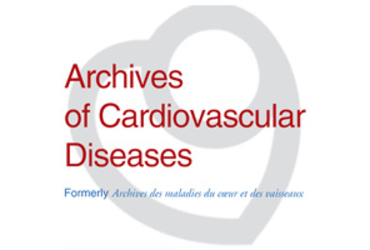Background and aim :
Serum cholesterol efflux capacity, a biomarker that integrates contributors and modulators of the initial step of the reverse cholesterol transport, has been associated with atherosclerosis independently of high-density lipoprotein (HDL) cholesterol level. The authors evaluated the prognostic impact of serum cholesterol efflux capacity on mortality in a large cohort of patients hospitalized for an acute myocardial infarction (MI).
Methods :
Serum cholesterol efflux capacity, cholesteryl ester transfer protein (CETP) activity, total cholesterol, low-density lipoprotein cholesterol, HDL cholesterol, and triglyceride levels were measured in 1,609 consecutive patients admitted with an acute MI. The primary endpoint was all-cause mortality evaluated at 6 years with a median follow-up of 1.9 years (interquartile range: 1.5 to 4.2 years). An analysis by quartile of serum cholesterol efflux capacity was also performed.
Results :
In a fully adjusted model that included age, sex, traditional cardiovascular risk factors including lipid levels, and prognostic factors of MI, serum cholesterol efflux capacity was a strong predictor of survival (adjusted hazard ratio for mortality per 1-SD increase in serum cholesterol efflux capacity, 0.79; 95% confidence interval: 0.66 to 0.95; p = 0.0132). Patients displaying an elevated serum cholesterol efflux capacity had a marked lower rate of mortality at 6 years (adjusted hazard ratio: 0.54 [0.32 to 0.89]; p = 0.0165) as compared with patients with reduced serum cholesterol efflux capacity.
Conclusion :
Serum cholesterol efflux capacity, an integrative marker of reverse cholesterol transport pathway and efficacy, was inversely associated with all-cause mortality in MI patients independently of HDL cholesterol level and other risk factors.






